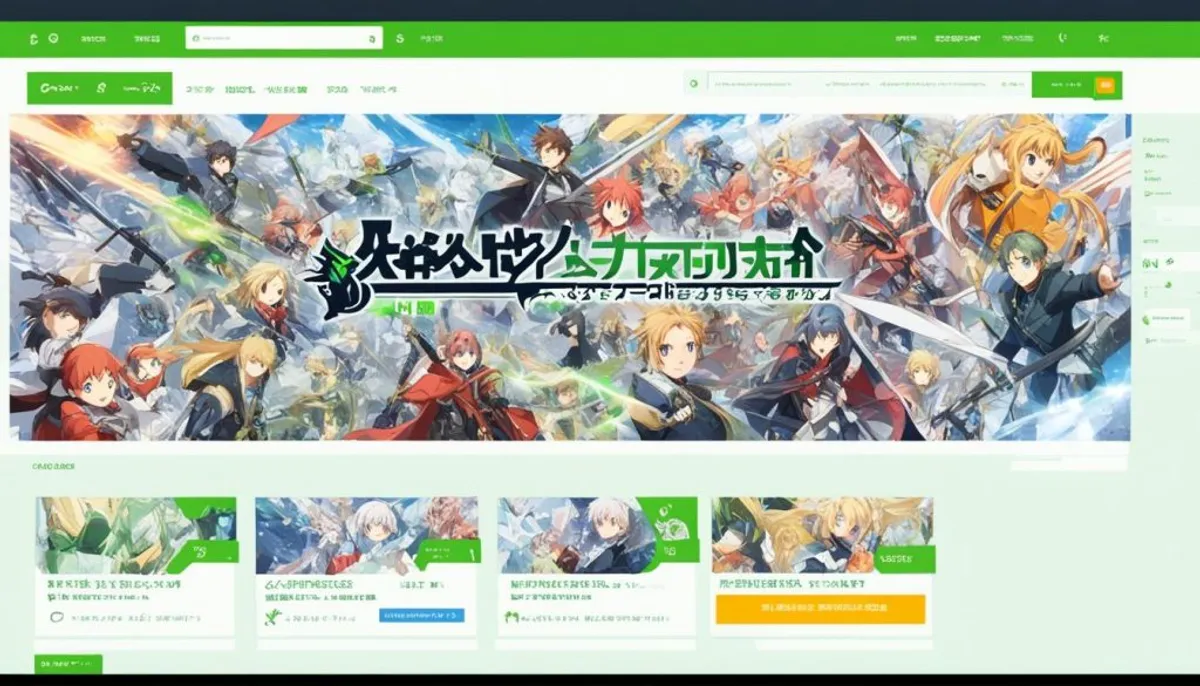The current technological landscape has made it increasingly important for nonprofit organizations to improve their online visibility. With thousands of nonprofits competing for attention, leveraging SEO (Search Engine Optimization) is key to helping nonprofits cut through the noise and reach their target audience. However, a 2021 survey found that only 37% of nonprofits actively implement a year-round SEO strategy, leaving a lot of potential visibility untapped. This article aims to demystify the world of SEO and provide a comprehensive guide on how nonprofit organizations can amplify their digital presence, increase their reach, and ultimately take their mission to new heights through effective SEO strategies.

Key Takeaways
- Leveraging SEO is crucial for nonprofits to increase their online visibility and reach their target audience.
- Only 37% of nonprofits actively implement a year-round SEO strategy, leaving significant room for improvement.
- This article will provide a comprehensive guide on how nonprofits can amplify their digital presence through effective SEO strategies.
- Implementing SEO strategies can help nonprofits cut through the noise and take their mission to new heights.
- Understanding the fundamentals of SEO, from keyword research to content optimization, is key for nonprofit success in the digital age.
What is SEO and Why is it Crucial for Nonprofits?
Search Engine Optimization (SEO) is the process of optimizing a website to rank higher in search engine results pages (SERPs). For nonprofit organizations, SEO is a crucial strategy that helps increase their online visibility, attract more donors and volunteers, and drive valuable traffic to their website. When a nonprofit’s website appears prominently on the first page of search engine results, it is more likely to be visited by people who are genuinely interested in their cause.
Understanding Search Engine Optimization
SEO involves various strategies, including keyword research, on-page optimization, content creation, link building, and local SEO. By implementing these strategies, nonprofits can improve their online presence, increase awareness of their mission, and ultimately drive more donations and support.
The Benefits of SEO for Nonprofit Organizations
Effective SEO allows nonprofits to target specific keywords related to their cause, ensuring that their message reaches individuals who are genuinely interested in their work, rather than casting a wide net with less certainty of engagement. This strategic targeting helps nonprofits connect with their ideal audience, leading to increased engagement, conversions, and ultimately, more support for their mission.
Targeting Relevant Audiences Through Keyword Optimization
By conducting thorough keyword research and incorporating these keywords into their website’s content, meta descriptions, and title tags, nonprofits can improve their website’s relevance and visibility in search engine results pages. This not only attracts more relevant traffic to their website but also ensures that their message resonates with individuals who are actively seeking information or solutions related to the nonprofit’s cause.
Conducting Keyword Research for Your Nonprofit
Keyword research is an essential part of any SEO strategy for nonprofits. It involves identifying the keywords and phrases that people use to search for topics related to the nonprofit’s cause. By targeting these keywords, nonprofits can improve their website’s visibility in search engine results pages (SERPs) and attract more relevant traffic.
Brainstorming Relevant Keywords
To conduct keyword research, nonprofits should start by brainstorming a list of keywords that are relevant to their mission. This can include terms related to their cause, the services they provide, or the geographic area they serve.
Using Keyword Research Tools
Once the initial list of keywords is compiled, nonprofits can use keyword research tools like Google Keyword Planner or SEMrush to identify additional keywords and phrases with high search volume and low competition. These tools can provide valuable insights into the search behavior of the target audience, helping nonprofits refine their content strategy and online visibility.
Considering Search Volume, Competition, and Relevance
When evaluating potential keywords, nonprofits should consider the search volume, competition, and relevance of each term. Keywords with high search volume and low competition can be particularly valuable, as they are more likely to drive qualified traffic to the nonprofit’s website. Additionally, it’s important to ensure that the selected keywords are closely aligned with the nonprofit’s mission and the interests of their target audience.
By conducting thorough keyword research, nonprofits can develop a comprehensive content strategy that effectively targets their audience and improves their online visibility through search engine optimization.
On-Page Optimization Techniques for Nonprofits
Effective SEO strategies for nonprofits go beyond simply driving traffic to their website. On-page optimization is a crucial component that involves optimizing the content, meta descriptions, and title tags to improve the website’s visibility in search engine results pages (SERPs).
Optimizing Content for Target Keywords
For nonprofits, on-page optimization starts with incorporating their target keywords into the website’s content. This involves identifying the keywords and phrases that potential donors, volunteers, and supporters are using to search for causes and organizations like yours. By strategically placing these keywords within the text, headings, and subheadings, nonprofits can signal to search engines the relevance and topical authority of their website.
Improving Meta Descriptions and Title Tags
In addition to optimizing the website’s content, nonprofits should also focus on enhancing their meta descriptions and title tags. These elements are crucial for capturing the attention of users in search engine results pages and encouraging them to click through to the website. Crafting compelling, keyword-rich meta descriptions and title tags can help nonprofits stand out from the competition and drive more relevant traffic to their online presence.
Structuring Content with Header Tags
Organizing the website’s content with the proper use of header tags (H1, H2, H3, etc.) can also contribute to improved search engine optimization and user experience. By utilizing these tags to create a logical hierarchy and structure, nonprofits can make their website more scannable and easier for search engines to understand and index. This, in turn, can lead to better search engine rankings and a more engaging user experience for visitors.

The Importance of High-Quality, Relevant Content
In the world of seo nonprofit and nonprofit marketing, content is the cornerstone of any successful digital outreach strategy. High-quality, relevant content is essential for improving a nonprofit’s website visibility in search engine results pages (SERPs) and attracting more user engagement from their target audience.
Understanding Your Target Audience
To create content that truly resonates with your nonprofit’s supporters, it’s crucial to research your target audience and identify the topics and issues that are most relevant to them. By understanding the needs, interests, and pain points of your audience, you can craft content strategy that provides valuable information, insights, and solutions to their challenges.
Creating Engaging and Informative Content
Once you’ve identified your target audience, the next step is to create engaging and informative content that addresses their needs. This could include blog posts, infographics, videos, or other multimedia content that showcases your nonprofit’s expertise, mission, and impact. By leveraging content creation techniques that capture the attention of your audience and provide them with meaningful value, you can improve your website’s user experience and encourage them to share your content with their networks.
Incorporating Visuals and Multimedia
In today’s digital landscape, visuals and multimedia have become increasingly important in inbound marketing and web analytics. By incorporating high-quality images, videos, and other visual elements into your nonprofit’s content, you can make it more engaging and informative, ultimately driving higher levels of online visibility and user interaction.
By focusing on the creation of high-quality, relevant content, nonprofits can significantly enhance their search engine optimization efforts, improve their website’s user experience, and ultimately drive more donations and support for their cause.
seo nonprofit
As the digital landscape continues to evolve, nonprofit organizations must adapt their SEO strategies to keep pace with the changing trends. One key area of focus is the growing importance of social media as a primary search tool, particularly among younger demographics. Reports indicate that more consumers, especially those in the millennial and Gen Z age groups, are turning to social platforms like Facebook, Twitter, and Instagram to seek information and discover new causes to support.
This shift underscores the growing significance of “Social SEO,” the process of optimizing social media content to increase its visibility and reach among potential supporters. By implementing effective Social SEO strategies, nonprofits can enhance their online visibility, digital outreach, and ultimately drive more engagement and support for their cause.
Some key strategies for leveraging Social SEO include:
- Tailoring content for each social media platform, considering the unique preferences and behaviors of the audience on each channel
- Incorporating relevant keywords and phrases into social media posts, profiles, and descriptions to improve search engine optimization
- Optimizing social media profiles by filling out all relevant fields, using consistent branding, and including links to the nonprofit’s website
- Utilizing relevant hashtags to increase the discoverability of the nonprofit’s content and connect with like-minded users
- Analyzing social media performance data to identify high-performing content and adjust the content strategy accordingly
- Leveraging interactive campaigns and user-generated content to engage the target audience and foster a sense of community
By implementing these Social SEO best practices, nonprofits can effectively connect with their audience, increase their online visibility, and ultimately drive more support for their cause. This holistic approach to digital outreach and inbound marketing can help nonprofits amplify their message, expand their reach, and ultimately achieve greater success in fulfilling their mission.
Leveraging Social Media for SEO Success
Social media has become a powerful tool for nonprofits to increase their online visibility and attract more relevant traffic to their website. By sharing high-quality, relevant content on social media platforms, nonprofits can reach a wider audience and drive more donations and support for their cause.
Sharing Content on Social Platforms
To leverage social media for SEO success, nonprofits should focus on sharing their website’s content on platforms like Facebook, Twitter, and LinkedIn. This not only helps to amplify the nonprofit’s message but also encourages their followers to engage with and share the content, further expanding its reach. By consistently posting engaging and informative content, nonprofits can establish themselves as industry leaders and build a loyal following.
Engaging with Your Audience
In addition to sharing content, nonprofits should also actively engage with their audience on social media. This includes responding to comments, answering questions, and participating in relevant discussions. By fostering a sense of community and showing a genuine interest in their supporters, nonprofits can strengthen their relationships and increase their online visibility.
Optimizing Social Media Profiles
Another key aspect of leveraging social media for SEO success is optimizing the nonprofit’s social media profiles. This involves incorporating relevant keywords and phrases into the profile bio, as well as linking back to the nonprofit’s website. By creating a cohesive and recognizable brand identity across social media platforms, nonprofits can improve their brand recognition and drive more inbound marketing efforts.

By implementing these strategies, nonprofits can increase their presence on social media and attract more relevant traffic to their website, ultimately driving more donations and support for their cause.
Building a Strong Online Presence
Building a strong online presence goes beyond simply having a website; it encompasses a broader strategy that includes online branding, advertising, and e-commerce solutions (if applicable). Developing a cohesive and recognizable brand identity online helps instill trust and loyalty among your nonprofit’s supporters.
Developing a Cohesive Brand Identity
Your nonprofit’s online presence should reflect a consistent and memorable brand identity. This includes using the same logo, color scheme, and messaging across all digital platforms, from your website to your social media profiles. By creating a cohesive brand identity, you can increase your organization’s visibility and establish a stronger connection with your audience.
Exploring Online Advertising Opportunities
Online advertising, especially through platforms like Google Ads with the Ads Grant program, can further amplify your nonprofit’s message and reach, targeting specific demographics or regions. By leveraging these digital advertising tools, you can effectively promote your cause and attract more potential donors, volunteers, and supporters.
Implementing E-Commerce Solutions (if applicable)
For nonprofits that sell products to support their cause, incorporating e-commerce solutions can provide an efficient way to generate additional funds. By offering an online store, you can make it easier for your supporters to purchase merchandise or make donations, ultimately contributing to the growth and sustainability of your organization.
By adopting this comprehensive approach to online strategies, nonprofits can enhance their overall digital presence and position themselves for long-term success in the digital age.
Measuring and Tracking Your SEO Efforts
In the ever-evolving world of seo nonprofit, it’s crucial for organizations to continuously measure and track the success of their digital strategies. By leveraging a range of web analytics tools, nonprofits can gain valuable insights into their website’s performance, monitor their search engine rankings, and analyze website traffic and engagement.
Using Web Analytics Tools
Platforms like Google Analytics provide a wealth of data that can inform your nonprofit marketing and content strategy. From understanding which content resonates most with your audience to identifying areas for search engine optimization improvements, these analytical tools offer a data-driven approach to maximizing your online visibility and digital outreach.
Monitoring Search Engine Rankings
Regularly monitoring your nonprofit’s search engine rankings is essential for identifying opportunities to enhance your web analytics and user experience. By tracking your position in the search results for key inbound marketing terms, you can ensure that your website is appearing in relevant queries and make adjustments to your content creation efforts accordingly.
Analyzing Website Traffic and Engagement
Delving into the details of your website’s traffic and engagement metrics can provide invaluable insights into your audience’s preferences and behaviors. By understanding which pages and content are resonating most with your visitors, you can refine your digital outreach strategies and create even more compelling seo nonprofit content that drives measurable results.
Conclusion
In the digital age, leveraging effective SEO strategies is crucial for nonprofit organizations to increase their online visibility, attract more donors and volunteers, and ultimately drive greater support for their cause. By understanding the fundamentals of search engine optimization, conducting thorough keyword research, implementing on-page optimization techniques, and creating high-quality, relevant content, nonprofits can level the playing field and compete alongside larger organizations with more extensive marketing budgets.
Moreover, the growing importance of social media and Social SEO further underscores the need for nonprofits to adopt a comprehensive approach to their online presence, incorporating strategies such as profile optimization, content tailoring, and audience engagement. By consistently measuring and tracking their SEO efforts, nonprofits can make data-driven decisions to continuously improve their digital strategy and achieve greater success in fulfilling their mission.
With the insights and actionable steps outlined in this guide, nonprofit organizations can confidently navigate the world of search engine optimization and unlock the full potential of their online presence, ultimately driving more support and making a greater impact in the communities they serve.
FAQ
What is SEO and why is it crucial for nonprofits?
Search Engine Optimization (SEO) is the process of optimizing a website to rank higher in search engine results pages (SERPs). For nonprofits, SEO is crucial as it helps increase visibility, attract more donors and volunteers, and drive traffic to their website. When a nonprofit’s website appears on the first page of search engine results, it is more likely to be visited by people who are interested in their cause.
How can nonprofits conduct effective keyword research?
Keyword research is an essential part of any SEO strategy for nonprofits. It involves identifying the keywords and phrases that people use to search for topics related to the nonprofit’s cause. By targeting these keywords, nonprofits can improve their website’s visibility in search engine results pages (SERPs) and attract more relevant traffic.
What are some on-page optimization techniques for nonprofits?
On-page optimization refers to the process of optimizing a website’s content, meta descriptions, and title tags to improve its visibility in search engine results pages (SERPs). For nonprofits, this involves incorporating their target keywords into their website’s content, meta descriptions, and title tags. Additionally, ensuring that the website’s content is high-quality, relevant, and engaging can help improve its user experience and encourage visitors to spend more time on the site.
Why is high-quality, relevant content crucial for nonprofit SEO?
High-quality, relevant content is essential for improving a website’s visibility in search engine results pages (SERPs) and attracting more relevant traffic. When a nonprofit’s content is engaging, informative, and relevant to its cause, visitors are more likely to spend time on the website and share the content with others.
How can nonprofits leverage social media for SEO success?
By sharing high-quality, relevant content on social media platforms, nonprofits can reach a wider audience and drive more donations and support. To leverage social media for SEO success, nonprofits should focus on sharing their website’s content on platforms like Facebook, Twitter, and LinkedIn, engaging with their followers, and encouraging them to share the content with their networks.
How can nonprofits measure and track the success of their SEO efforts?
Measuring and tracking the success of your nonprofit’s SEO efforts is crucial for ongoing optimization and improvement. By utilizing web analytics tools, nonprofits can monitor their website’s performance, track search engine rankings, and analyze website traffic and engagement. Tools like Google Analytics can provide valuable insights into which content and strategies are resonating with the target audience, allowing nonprofits to make data-driven decisions to enhance their online presence.
RelatedRelated articles



